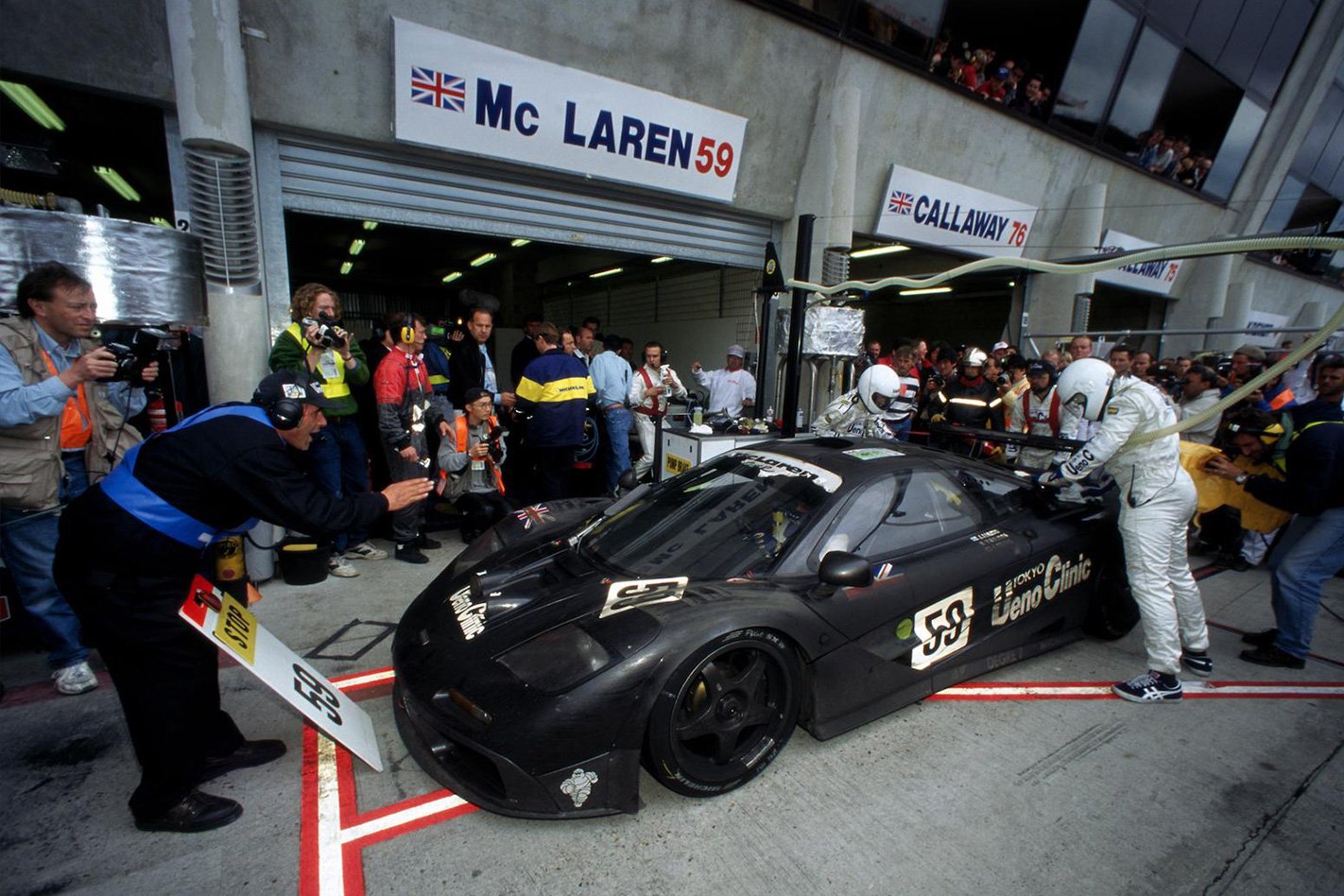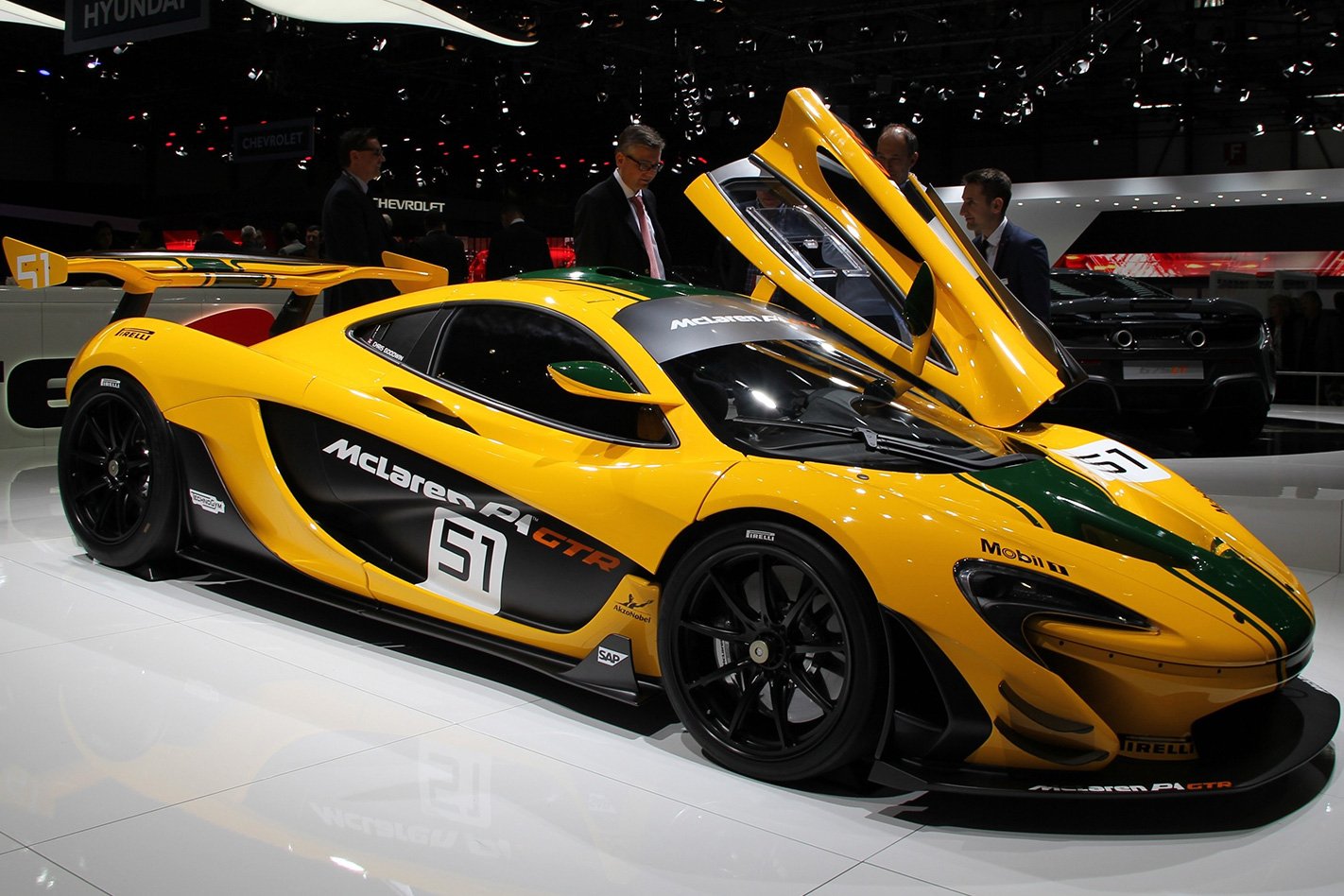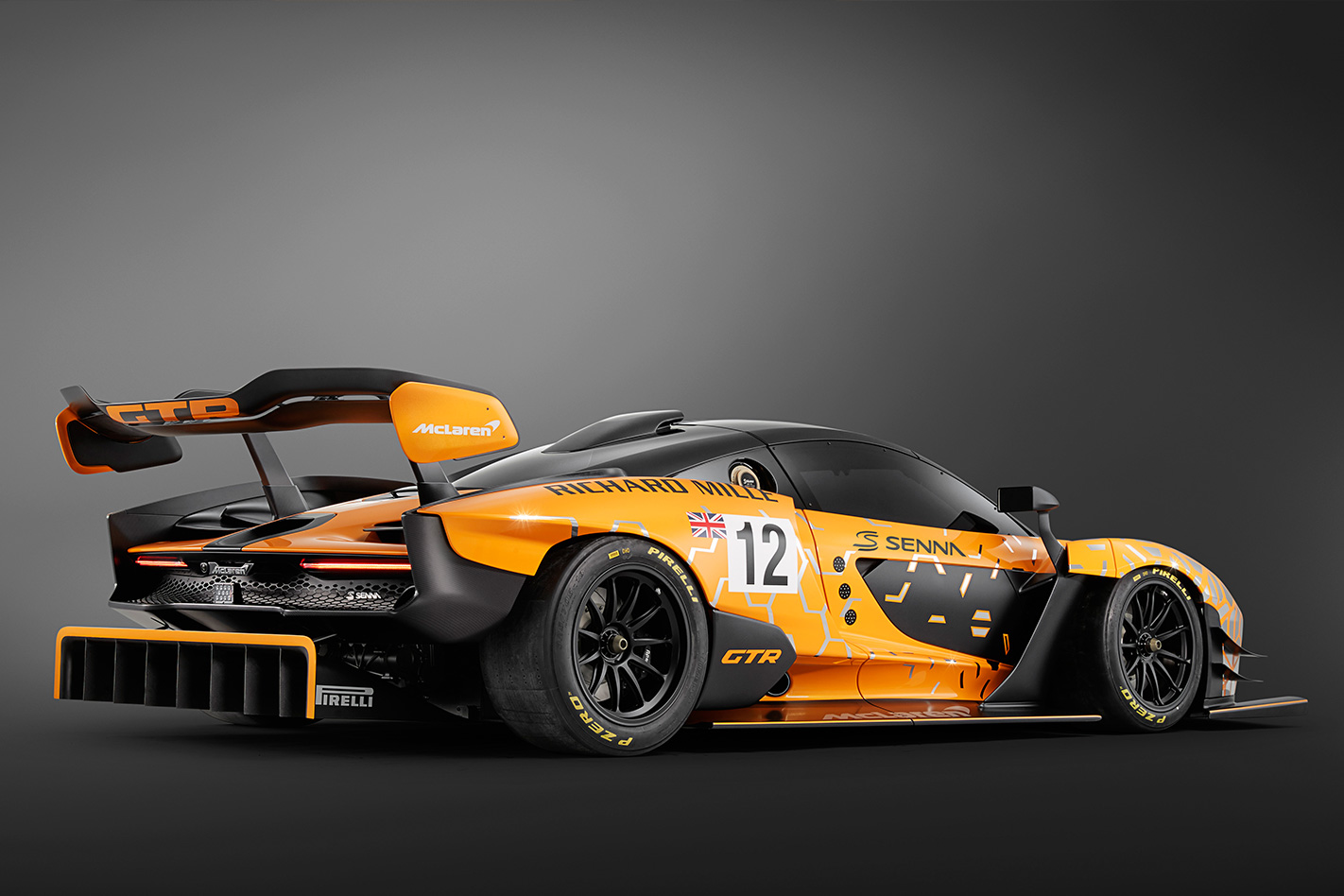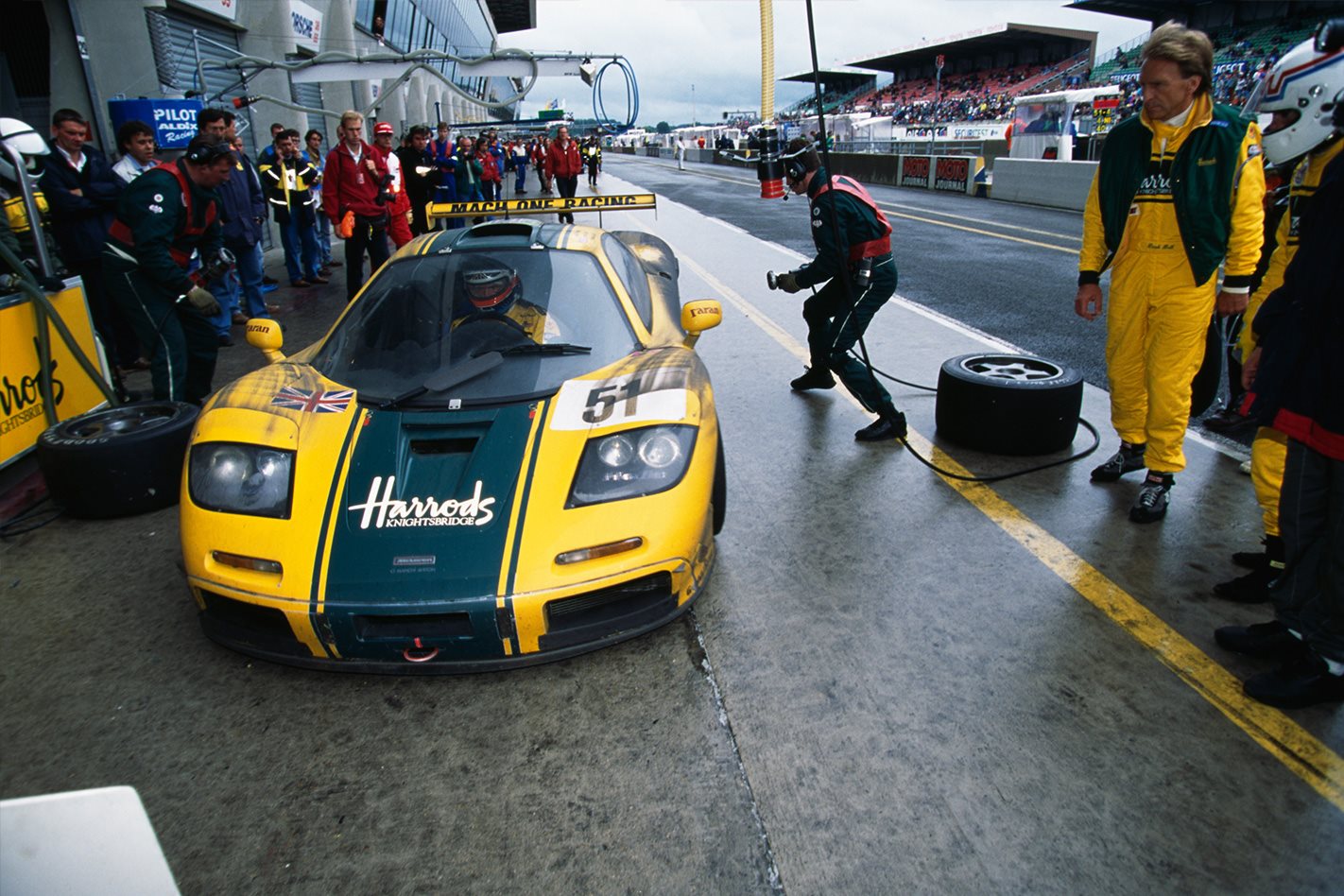THE men and women of Woking are great at two things, exquisite supercars for the road, and blindingly fast race cars for the track.
Sometimes (just three times in over two decades), McLaren will unleash the GTR badge on the world, and combine those two skills to transform a road-faring piece of exotica into bewinged beasts destined for track dominance.
While McLaren is one of the most successful teams in F1 history – with its trophy cabinet overflowing with eight constructors’ championships, 12 drivers’ championships, and 182 grand prix race victories – the GTR badge’s origins stem from its road-going creations.

Previously:
FIRST GENERATION – F1 GTR
When McLaren’s first road car, the F1, was built, its creator Gordon Murray never intended for it to go racing. Instead he envisioned his creation as the ultimate road car.
But it’s hardly a coincidence that one of the greatest road cars in history turned out to be a pretty handy race car as well.
Soon after the F1’s launch in 1994 Stephane Ratel (who later went on to popularise GT3 racing around the globe), and two of his mates, started the BPR Global GT Endurance Series, whose debut season saw homologated racing versions of the Ferrari F40 and Porsche 911 Turbo do battle.
For the following season teams started looking for alternatives, and several turning to Murray in the hope of convincing the F1’s creator to let them race factory-backed versions of his car.
Murray initially resisted the requests, but relented in time for a racing-version of the GTR to be homologated for the 1995 series, following a rushed three month development.
The F1 actually didn’t require extensive modifications to became a race car, and earn the GTR badge, apart from the obligatory rollcage and aerodynamic modifications, along with stripping the interior of all unnecessary luxuries, and adding new cooling ducts.
Carbon brakes replaced standard-issue steel unites, while regulations meant the F1’s BMW S70 6.1-litre naturally-aspirated V12 engine was required to breathe through an air restrictor which limited power to 441kW. In the transition from road to race car, the F1’s stock gearbox remained unchanged.

The GTR’s crowning moment came at that year’s 24 Hours of Le Mans, where it won outright, against purpose-built prototype sportscars. On debut the F1 GTR finished 1st, 3rd, 4th, 5th and 13th.
Victory at the 24 Hours of Le Mans made McLaren the only manufacturer in the world to have won the Formula 1 World Championship, Indianapolis 500, and Le Mans 24 Hour.

In total 28 F1 GTR chassis were built, nine in ’95-spec, nine in ’96 spec, and 10 in ’97 ‘long tail’-spec.
The F1 GTR competed internationally for a decade, with the final race chassis retired in 2005.
SECOND GENERATION – P1 GTR
The GTR badge has sat dormant for nearly a decade after the final F1 GTR was retired, when McLaren announced the moniker would return in 2014 to celebrate the 20th anniversary of the F1 GTR’s 24 Hours of Le Mans outright victory.
McLaren didn’t produce road cars for much of the intervening period, returning to the supercar-building business in 2009 with the MP4-12C, followed by 650S. Both were transformed into GT3 racers, but McLaren waited for the right car to live up to the F1’s legacy to break loose the GTR badge.
That car came in 2013 with the P1, a hybrid hypercar that formed a part of the holy trinity (along with Porsche’s 918 and Ferrari’s LaFerrari) and defined fast for a new generation of enthusiasts.

The P1 GTR was not built to the restrictive specifications of a racing category, instead it was an exhibition of McLaren capabilities. Each of the 58 P1 GTR’s cost A$3.3 million initially, and were only offered to customers which already owned a road-legal P1.
They were built, maintained and run by Woking’s McLaren Special Operations (MSO), with the 3.8-litre twin-turbo V8 and electric batteries and motors tuned to produce a combined system output of 735kW. The P1 GTR is 50kg lighter than its road-faring sibling thanks to extensive use of lightweight materials.

Visually the P1 GTR is instantly identifiable thanks to race-inspired bodywork, a larger front splitter, and a fixed rear wing with an F1-esque drag reduction system.
Outside of McLaren’s calculating control, a company called Lanzante began conversions which made the P1 GTR road-legal. In total 27 P1 GTRs were converted by Lanzante into ‘P1 LM’ specification for road use.
THIRD GENERATION – SENNA GTR
Then came the Senna GTR, a homage to the legendary F1 champion Ayrton Senna, which McLaren claims is its fastest car outside of Formula 1.
Like its P1 predecessor, the Senna GTR doesn’t meet any racing category regulations, and is designed as a track toy for the ultra-rich.
However, unlike the P1 GTR, there are no batteries here, just a 4.0-litre twin-turbo V8 turned up to produce “at least” 606kW.

Of all the GTRs, the Senna has the most extreme bodywork, with the large front splitter, rear diffuser and spoiler working in conjunction to produce a tonne (1000kg) of downforce.
Other modifications include a wider front track, new fenders front and rear, along with lightweight materials replacing glass in the doors.

No word yet on if Lanzante will build a road-legal iteration of the Senna GTR like it did with the P1 GTR.






